With the uprising of the Iranian people triggered by the death of Mahsa Amini in custody of morality police well into its 11th week, Iranian security forces continue to use everything at their disposal to savagely suppress the protests. In two previous special reports, we took close look at the equipment used to suppress the demonstrations and at the individuals and companies that are supplying the Islamic Republic with these equipment.
In this exclusive report, we expose, for the first time, the role of Russia and the Sports Ministry and sports federations in Iran in the training of Iranian security forces in Systema Spetsnaz, a Russian style of hand-to-hand fighting taught to the country’s special forces (Spetsnaz).
According to some Russia experts, the country’s intelligence services are using Systema Spetsnaz clubs in EU countries to recruit agents, and all instructors have "direct or indirect" links to the Russian military intelligence service GRU or the domestic intelligence service FSB. There have been numerous reports on how GRU has used these clubs sow unrest, recruit spies and train extremist far-right groups in these countries.
In this report, we show that Iran’s Sports Ministry has been infiltrated by members of the Fatehin Special Unit, a specialized Basiji force heavily involved in suppressing protests. Two figures in the Fatehin Special Unit have connections with Russia and have been active in training members of this unit, riot police and the army’s rapid response forces.
It all began with the Fatehin Special Unit
In an interview with the website Javan in spring 2015, General Hossein Hamedani, one of the most infamous commanders of the Islamic Revolutionary Guards Corps (IRGC) who has played a key role in suppressing protests in Iran, revealed a new project to recruit forces of suppression. In his last interview before being killed in Syria in October 2015, Hamedani described in detail the first phase of this project: recruiting thugs.
Speaking about his role in suppressing widespread protests in the aftermath of the disputed 2009 presidential election, Hamedani said: “During the 1999 [student protests], I was the acting commander of the Basij resistance forces and this experience helped me. Also, I had served in Tehran twice. In 1981-1982 I was with [the IRGC] Mohammad Rasulullah Division, and in 2002 I was the commander of the Tehran division. So, I knew Tehran and the area perfectly well. I had a good knowledge about Tehran’s terrain and human geography and its economic and cultural situation. I had a commanding knowledge of the political parties and groups, and we had analyzed them carefully at [IRGC’s] Sarollah Headquarters. The intelligence work that we have done at the Sarollah Headquarters proved to be very useful.”
“We identified 5,000 of those who had participated in the unrests but did not belong to political parties and groups. We identified these thugs and ruffians and put them under surveillance at their homes. On the days that calls [for protests] were made, they were confined and were not allowed to leave their homes. Then I recruited them into battalions. Later, these three battalions showed that if we want to train warriors, we must bring in individuals like them who know how to use machetes and daggers…We also mobilized 30 squads that were associated with me, and we sent them toward [Tehran] University. On [that day] these three battalions put an end to the riot.”
At the time but also a few years later, especially during the bloody crackdown on the November 2019 protests, these statements by General Hamedani were extensively quoted by the media and many saw it as a confirmation that “battalions of thugs and ruffians” were now part of government forces. However, Hamedani’s statements were filled with lies and exaggerations aimed at giving a scary image of the Islamic Republic’s repression machine. The three battalions mentioned by Hamedani were in fact created as part of the Fatehin Special Unit, which had been formed 10 years before the 2009 events when Hamedani was the acting commander of the paramilitary Basij force. Thugs were later recruited into this unit.”
The Fatehin Special Unit was created in summer 1999, right after the students’ protests of that year. The aim was to prepare and organize Basij members and plainclothesmen of the paramilitary Ansar-e Hezbollah (“Supporters of the Party of God”), the first group of “thugs” controlled by the regime, who would be used against future protests outbreaks.
At the time, this unit was under the supervision of Majid Fathinejad, commander of the Basiji base in Tehran’s Meghdad District and an official of Iran’s Civil Aviation Organization. The force was named Basij Airborne Special Operations Unit.
“On July 9, 2009, the need for a Basiji security organization was quite obvious,” Mahmoud Hashemi, Fathinejad’s successor as Fatehin Special Unit commander, said in an interview in 2020. “Basij did not have a trained, centralized and organized force. It was decided that the fellows who were involved would get together and start training these forces under the supervision of the martyr Majid Fathinejad who, at that time, was also the commander of our base.”
“This started…when the 1999 sedition was over. We tested and recruited qualified individuals from Meghdad District and western Tehran, and organized them as a battalion.”
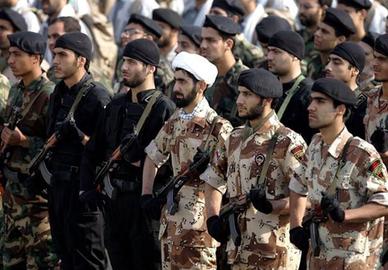
According to Hashemi, the first mission of this unit was to suppress the July 1999 protests in Tehran. The performance of this unit in the field led IRGC Commander-in-Chief General Rahim Safavi to integrate this unit, which was unofficially part of the Basij Organization, into the Sarollah Headquarters, the most important garrison in Tehran. The garrison is tasked with maintaining security in the capital and is under the direct supervision of IRGC’s top command.
Two other battalions were added to the existing one. These were the three battalions that Hamedani mentioned in his interview. Hashemi also talked about this unit’s key role in suppressing the 2009 protests in Tehran.
Recruiting Thugs into IRGC’s Combat Forces
Initially, the Airborne Special Operations Unit was an unofficial force and did not appear in the organizational charts of the IRGC combat forces or Basij Organization. In 2012, by the order of General Mohammad Ali Jafari, commander-in-chief of the IRGC, this unit was officially integrated into the Revolutionary combat forces and its name was changed to Fatehin (“Victors’”) Special Unit. It was integrated into the IRGC’s Mohammad Rasulullah Division in Tehran, but more battalions were later created in all the provinces.
One important thing that Hamedani failed to mention in his interview was the role played by this unit in the Syrian civil war. The Fatehin Special Unit was one of the first Basiji combat forces deployed in Syria under the command of IRGC’s expeditionary Quds force. In a number of videos published in 2018, we can see a famous thug known as Hani Kordeh (“Hani the Kurd”) among soldiers of the Quds Force in Syria.
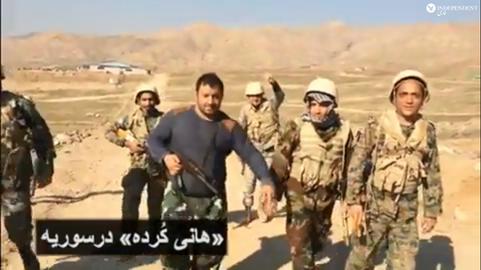
These images, used as a propaganda tool for the IRGC, prove Hamedani’s claim about the recruitment of thugs into the Revolutionary Guards’ combat forces. They also prove that the main recruiter of thugs into the armed forces of the Islamic Republic is the Fatehin Special Unit, which is actively involved in the deadly suppression of popular uprisings and protests both in Iran and in Syria. A recent meeting between President Ebrahim Raisi and members of the Fatehin in late November removed any doubt about the role of this unit in suppressing recent protests.
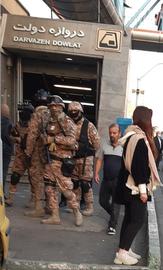
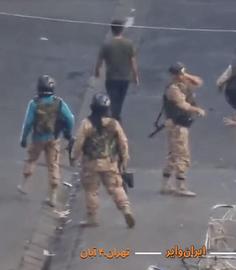
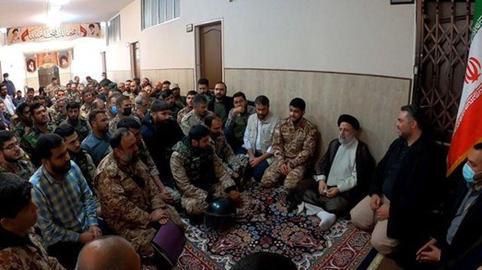
The Sports Ministry’s Role
Before the formation of the Fatehin Special Unit, security agencies of the Islamic Republic organized thugs they needed to suppress protests in the framework of mourning companies, groups that organize and perform mourning ceremonies for Prophet Mohammad, his family and Shia imams. In his interview, Hamedani said these companies were deployed to put down protests in 2009. However, as the Fatehin Special Unit consolidated its position and was later joined by the Imam Ali Security Battalions, mourning companies became one of the most important sources of recruits for security forces. After Hamedani died in 2015, Hossein Sazvar, a Shia eulogist close to Supreme Leader Ali Khamenei, took over his role at the Moj al-Hossein mourning company. He has very close relations with senior members of the Fatehin Special Unit and has recruited many thugs into this force.
Iran’s Ministry of Sport and Youth and the martial arts federations under its supervision also play a role in the recruitment of thugs into security forces. Mourning companies are intermediaries between thugs, martial arts clubs and the federations. Sazvar has close relations with kick-jitsu athlete Mohsen (Siamak) Baghban Khorrami and the vice president of the Kick-Jitsu Committee, Mohammad Yaran. Both are senior members of the Fatehin Special Unit and hold positions at martial arts federations.
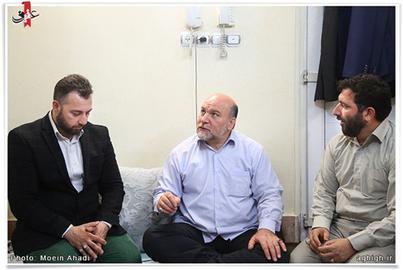
Another example is the role of Hassan Kordmihan, known for his role in the 2016 attack on the Saudi Embassy in Tehran, in recruiting thugs into the Fatehin Special Unit through mourning companies and Iran’s Judo Federation.
Kordmihan, who had close relations with General Hamedani, is a member of the Fatehin Special Unit and a well-known speaker at ceremonies organized by mourning companies in Tehran. He was recently appointed as cultural director of the Judo Federation. He is also in charge of a judo club named Ali Heydar, one of the most important recruitment centers used by the Fatehin Special Unit for youngsters and thugs in southern Tehran.
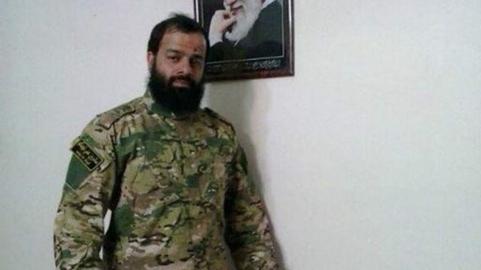
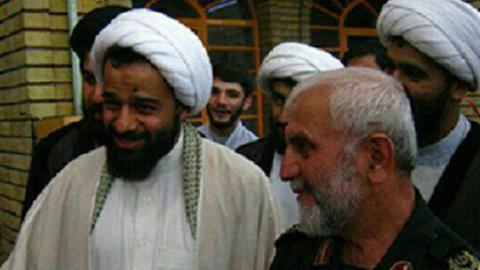
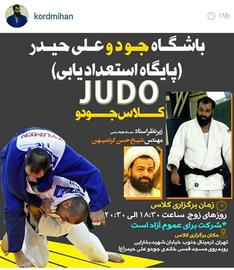
“Many of the thugs who cooperate with the government are recruited through martial arts clubs,” said judoka champion Vahid Sarlak, a former member of the national judo team who is now a legal resident of the German Judo Federation. “Either they offer them a position at a federation or give them a club and, in exchange, they recruit for security agencies or directly participate in suppressing protests.”
IRGC’s control of Iranian sports federations is not something new but what is less known is how these federations are used to recruit for forces of suppression and, more importantly, their role in training these forces.
Our investigations show that the Sports Ministry and several federations, including the Martial Arts Federation, are directly involved in training members of the Police Special Unit (riot police) and Fatehin Special Unit. They also show that, after being trained in Systema Spetsnaz, officials at Iranian sports federations then train forces of suppression.
Russia’s Role
In May 2016, a picture was published showing Khorrami at a kick-jitsu competition in the Ukrainian city of Lviv, wearing a jersey with a picture of Khamenei and a headband with the words “Holy Shrine Defender”, the nickname for Islamic Republic’s forces in Iraq and Syria. He is also holding an “Oh, Hossein!” flag, in reference to the third Shia Imam.
Asked about this picture during a live TV show, the athlete announced he was a member of the Fatehin Special Unit. The same year, pictures of Khorrami were published showing him next to Fatehin chief Hashemi during a meeting of the unit’s commanders. As the person in charge of teaching Systema Spetsnaz, Khorrami holds a key position in the Islamic Republic’s forces of oppression.
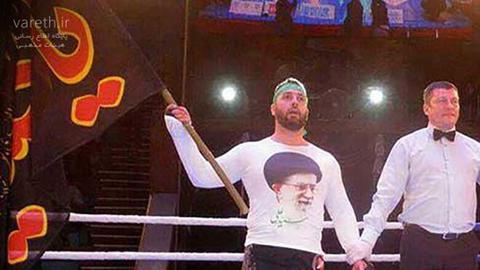
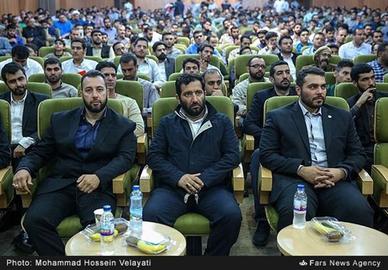
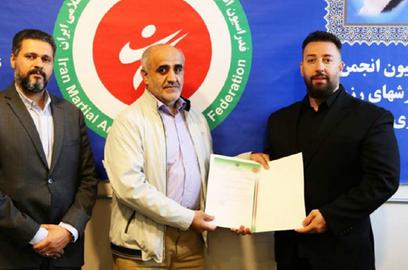
The president and chief instructor of the Systema Spetsnaz International Training Center is Vadim Starov, a former member of the Russian Special Operations Forces who has close relations with Russia’s intelligence service. Some security analysts believe that Starov is an active member of the Russian Military Intelligence Organization (GRU) and numerous investigations have shown that the Russian intelligence services use Systema Spetsnaz and clubs to recruit operatives and to organize and train far-right and paramilitary groups in other countries, especially in Western Europe. Systema Spetsnaz includes practical, easy-to-learn hand-to-hand combat moves and a wide range of meditation techniques, including chakras opening exercises.
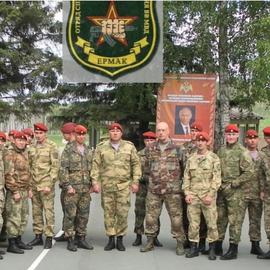
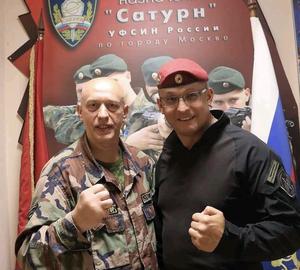
Khorrami is the head of the Systema Spetsnaz training center in Iran. He and his deputy Ehsan Ashtari Larki were trained in Russia where they received their licenses directly from Starov. They are responsible for training riot police and the Fatehin Special Unit in the Russian martial art.
Ashtari is also a Fatehin Special Unit member and vice chairman of Iran’s Shidokan Karate’s technical committee. On two occasions, on June 15 and June 19, 2009, at least three eyewitnesses identified him as the field commander of anti-riot forces during protests in Isfahan.
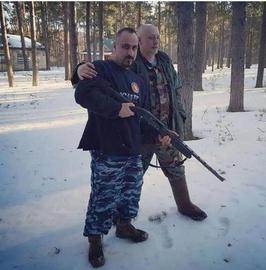
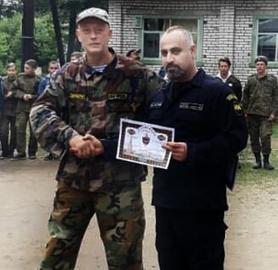
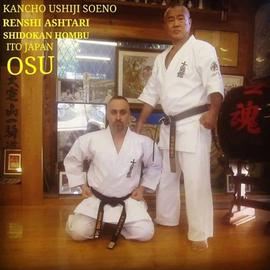
Upon Ashtari’s return to Iran after completing his training course in Russia, he and Khorrami started training Iran’s police and military forces in Systema Spetsnaz. Ashtari was also put in charge of the Master of Arms International Military Games, hosted by the army of the Islamic Republic. Systema Spetsnaz activities are conducted under the supervision of Iran’s Judo Federation and Martial Arts Federation. Ashtari and Khorrami have been the instructors in almost all Systema Spetsnaz training courses for the police and military forces. The Judo Federation organized these courses or at least cooperated in their organization. The name of the Iranian Judo Federation is clearly visible on a poster of the first Systema Spetsnaz training course for rapid deployment forces at the 8th Fighter Planes Base in Isfahan.
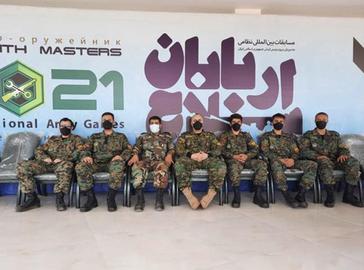
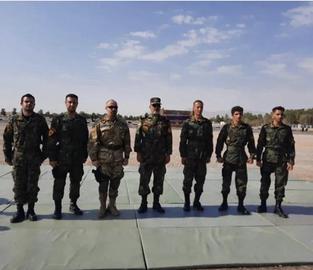
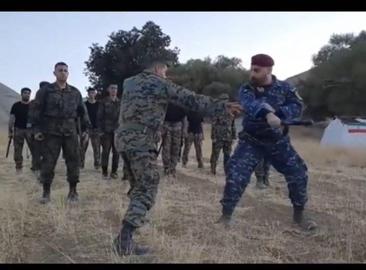
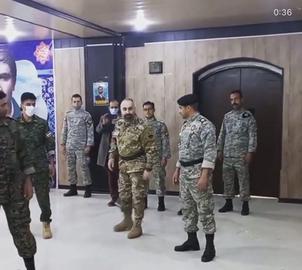
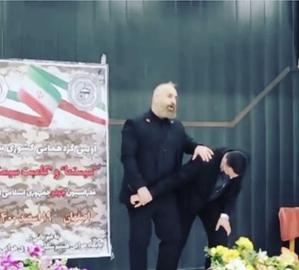
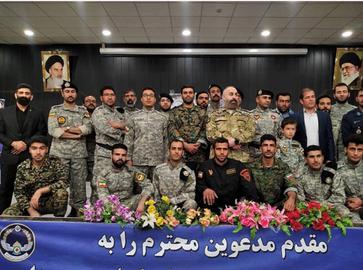
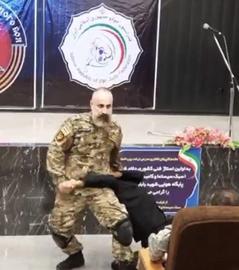
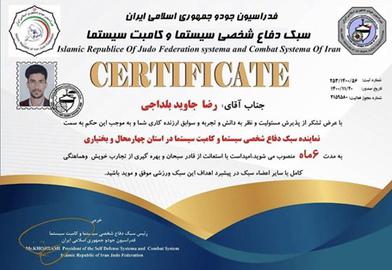
Ashtari and Khorrami have continuously trained riot police. Both Systema Spetsnaz and kick-jitsu group have representatives in the riot police. On June 24, 2020, Khorrami participated in a meeting with Colonel Farzad Abbasi, head of the Police Special Units’ Physical Education Department, on the training of these forces on self-defense and the use of paintball guns.
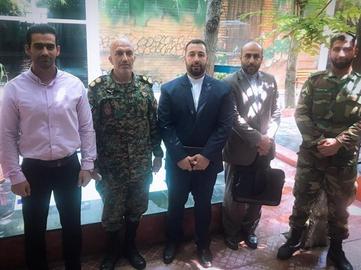
On September 23, 2020, in a meeting with Colonel Nazari, head of the National Police’s Physical Education Department, Martial Arts Federation President Yousef Behtari signed a letter of understanding to create martial arts societies within the police force. And on August 13, 2020, Khorrami was appointed by Behtari’s order as secretary of the Martial Arts Federation.
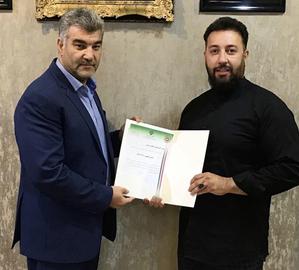
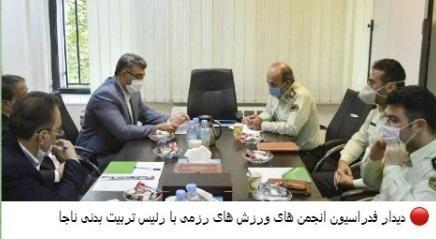
Almost all Russian sports have been sanctioned after the invasion of Ukraine and international sports organizations have suspended cooperation with Russia in sports. However, Iran’s Sports Ministry has continued to cooperate with Russia and is using some of the most notorious Russian paramilitary agencies to indirectly train the Islamic Republic’s forces of suppression.
Individuals directly involved in training these forces have been appointed to the highest ranks of Iran’s sports federations, practically turning these federations into agencies for training on how to suppress protesters. If international sports organizations do not take immediate action to prevent this phenomenon, their credibility will be seriously undermined.
visit the accountability section
In this section of Iran Wire, you can contact the officials and launch your campaign for various problems





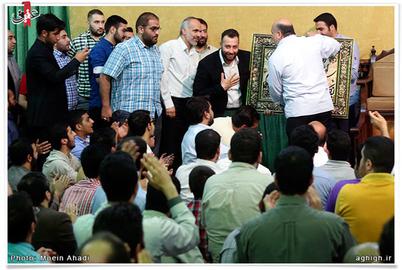
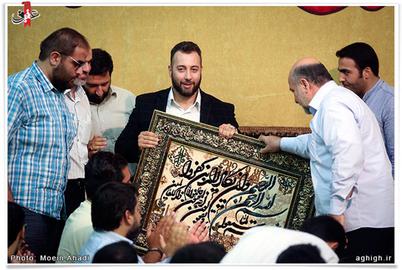
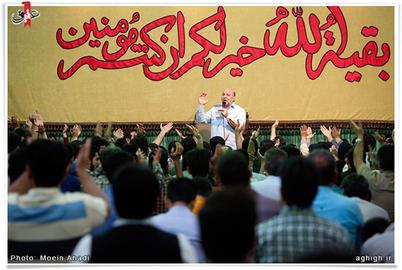
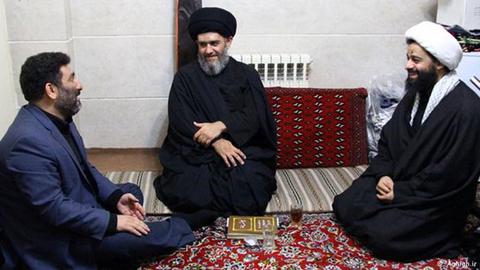
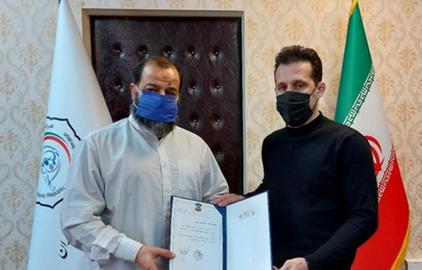
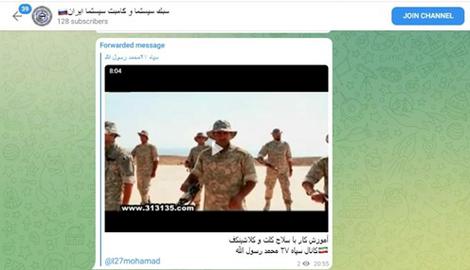










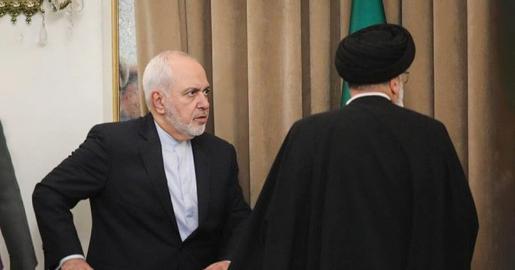
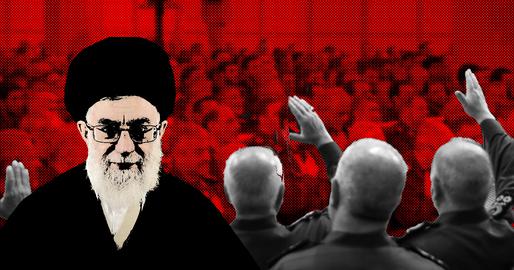







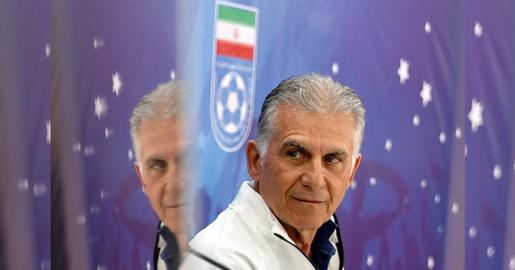
comments